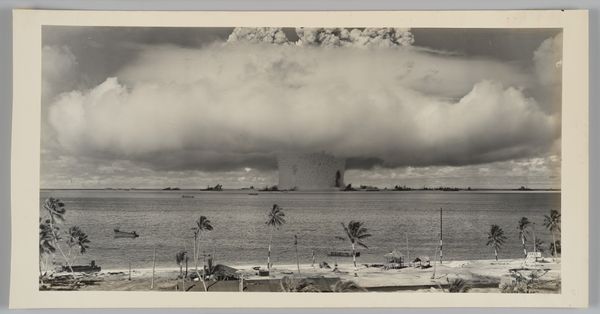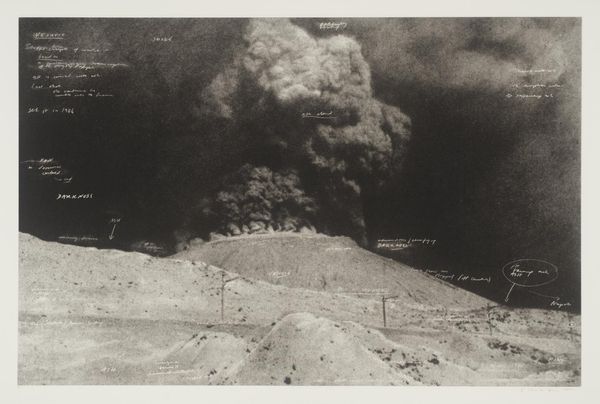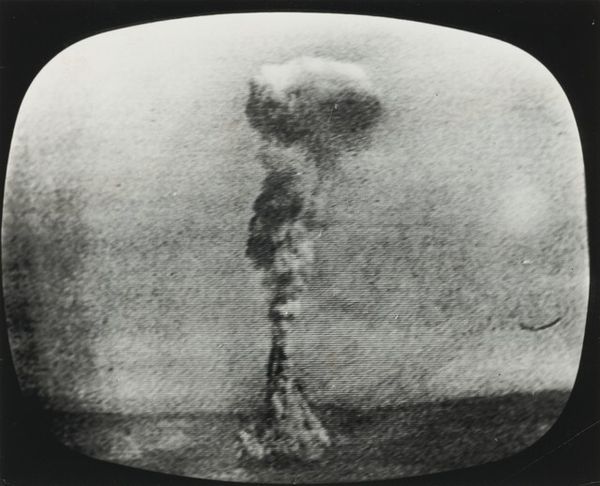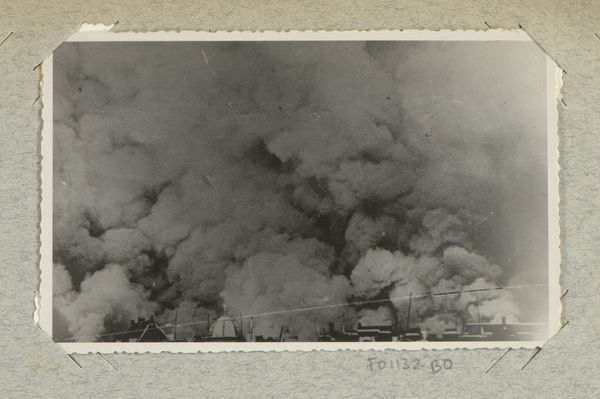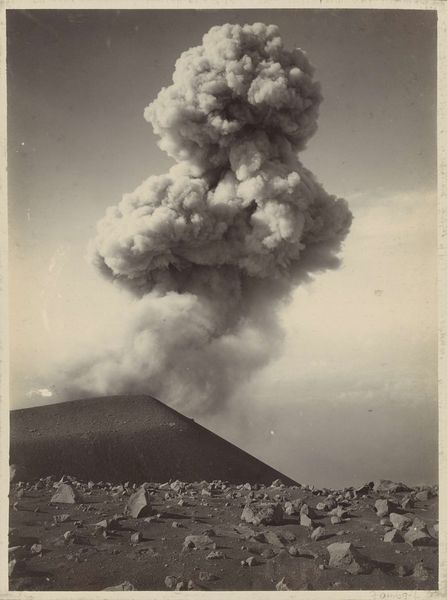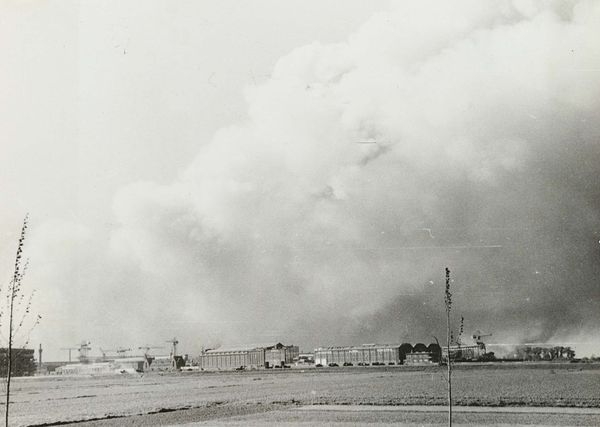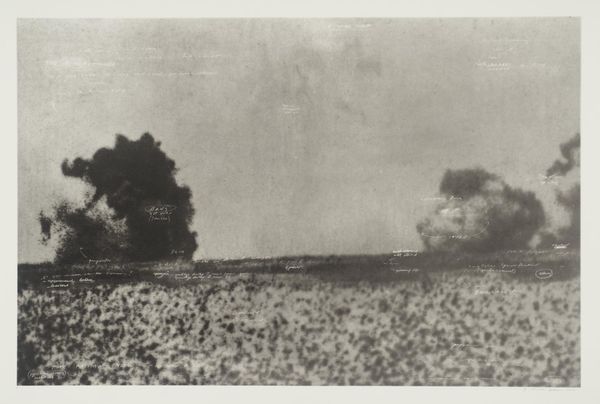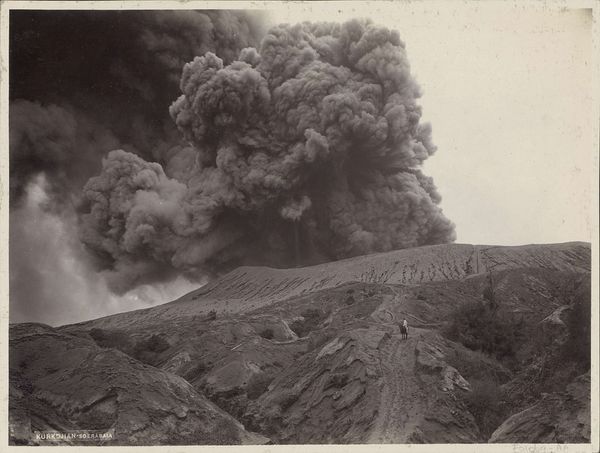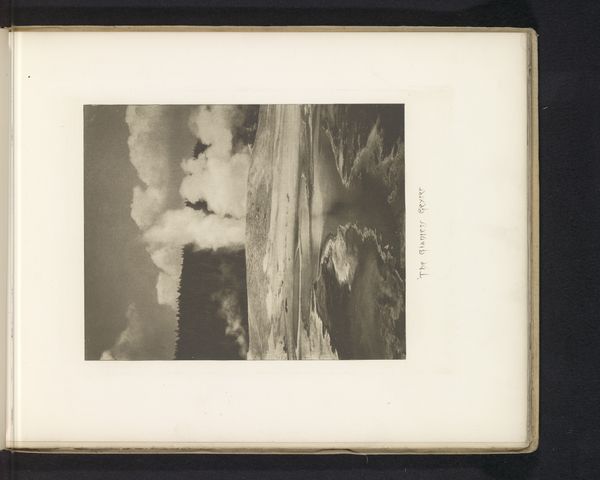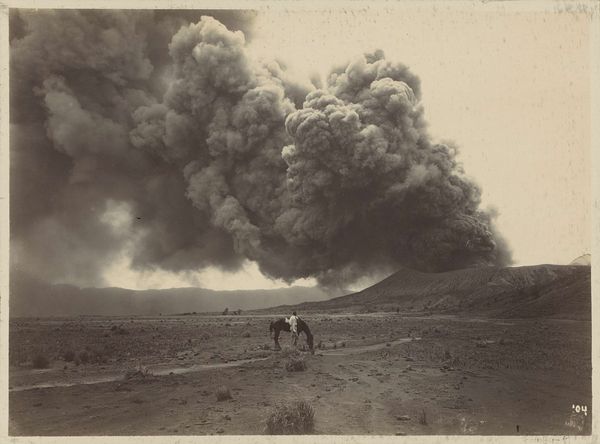
photography, gelatin-silver-print
#
landscape
#
photography
#
gelatin-silver-print
#
history-painting
#
modernism
Dimensions: height 118 mm, width 234 mm
Copyright: Rijks Museum: Open Domain
Curator: What a striking photograph. It possesses an undeniable drama despite the cool, grayscale palette. Editor: Yes, it's utterly unsettling, this placid beach scene bisected by atomic violence. A beautiful, terrible contradiction in terms of making and consumption. It certainly begs many questions of agency and perspective! Curator: Indeed. This gelatin silver print, likely from 1946 or 1947, depicts an atomic bomb test during Operation Crossroads. What we're seeing here is an image created by Army-Navy Task Force One. Consider the geometry—the mushroom cloud, that monstrous, bulbous form, contrasted with the placid horizontal line of the ocean, itself reflecting light from the sky in very modern terms. The palm trees at the bottom center frame the picture with visual depth. The photograph’s structure presents both sublime beauty and stark devastation in visual paradox. Editor: What interests me is the labor—the sheer logistical effort required to stage and document this event. Think of the mining of the raw materials, the scientific research, the human cost. Even the gelatin silver process itself is an intervention on and engagement with silver mines, animal labor through bone glues, the very material manifestations of both industrial and colonial efforts during and just after the war. How do we understand photographic production complicit with this project, the laboring hand that documents but can't critique or perhaps has been discouraged to? The photographer becomes simply an extension of the destructive apparatus itself. Curator: Certainly, these images operate on multiple levels of symbolism. They speak to both the military and scientific endeavor but also reveal inherent moral issues of our technology. Do you find the contrast between the man-made destruction and the natural landscape particularly evocative, speaking of history painting perhaps? Editor: Absolutely. We tend to glorify technological advances without reckoning with their tangible cost to individuals, communities, land, and water sources involved. This image captures a singular moment of both technical triumph and potential ruin. I cannot deny that its visual simplicity still obscures layers of extractive process to reach its very final stage: the dissemination of information through photography, easily consumed, though still bearing witness. Curator: Its modernist leanings, composition, and visual economy really give you pause to appreciate and question the power structures underlying it. Editor: Precisely, forcing us to confront both the visible and invisible costs of human progress—a vital consideration for our future.
Comments
rijksmuseum about 2 years ago
⋮
Between 1946 and 1958 the United States experimented with nuclear weapons on Bikini Island in the Pacific. On 25 July 1946 an atomic bomb was exploded underwater along the coast. These images were printed in large format in Life magazine, with the caption: ‘It was perhaps the most awesome man-made spectacle ever photographed.’ These photographs allowed the public at large to see the destructive power of the atomic bomb for the first time.
Join the conversation
Join millions of artists and users on Artera today and experience the ultimate creative platform.
